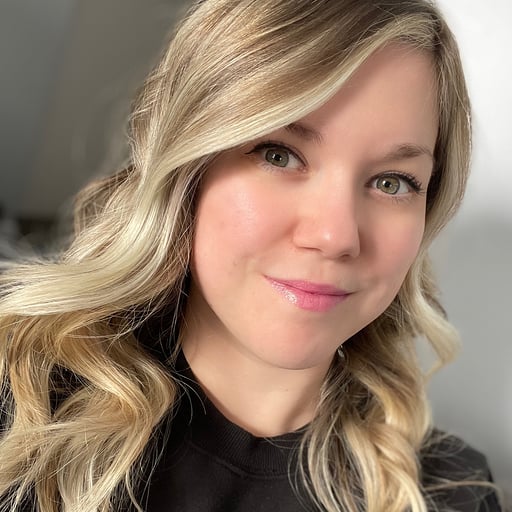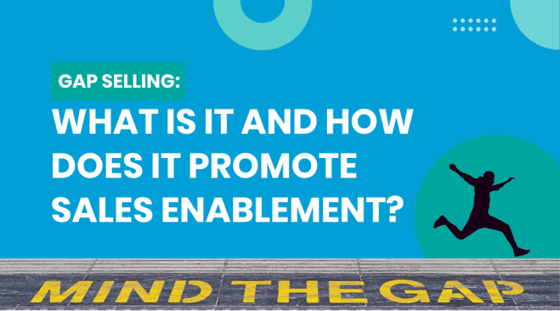


GAP Selling: what Is It and how does it promote sales enablement





Before it was MEDDICC VS BANT; Now, let’s talk GAP.
What is GAP Selling?
GAP selling is built on a problem-centric, buyer-centric model. It acutely focuses 80% of the selling process on understanding the buyer's “GAP.”
.png?width=700&name=Your%20paragraph%20text%20(2).png)
What is their current state and what do they want for their future state?
GAP selling is entrenched in the psychology of selling and works to effectively recognize that until a buyer knows why they need to change and why staying with the status quo is no longer an option, no sale can or will occur.
To keep in line with this, this method of selling puts the buyer at the centre of the selling process.
Things like decision process, specific criteria, champion identification, and competition analysis are not brought up until the gap has been explored and identified. This ensures the buyer has actually agreed that they can’t continue with how they have been operating. In order to meet their goal, they must adopt a change and new solution.
Limitations of the MEDDICC methodology
The MEDDICC sales process, like BANT, is centred primarily on the selling elements important to the seller and how to best work towards closing the sale. This in turn places less emphasis on actually solving the buyer’s problems, understanding why they exist, and what impact they are having on the company.
This can result in buyers becoming frustrated and losing trust in the rep as they don’t feel understood and in turn struggle to understand the value of what you’re proposing to them. This lack of understanding can very quickly deteriorate the sale into a more simplistic feature and offer comparison and price conflict situations.
GAP selling to the rescue
GAP selling helps to minimise the emphasis on non-value elements that don’t benefit your buyers while offering a multi-state approach. GAP selling and method that drives salespeople towards the model that focuses on the problem first.
GAP selling and sales enablement
Sales enablement is the process of providing your sales team with the resources they need to sell more. In the context of GAP selling, sales enablement is about providing your team with the right tools, knowledge, and information.
In the next section, we break down what information you need to know in order to use the GAP selling framework. To access this information, you will need to use your CRM and leverage the following tools:
- Standardised reporting - Review what has worked and what hasn't worked. What deal were won and lost? How many demos resulted in deals won? What activities are being reported by your sales team?
- Review your Sales process - by looking at reports, your sales leadership team should be able to depict an accurate representation of where disconnect points occur. Begin with a sales audit to discover areas that can be improved.
- Collect sales content - Once you have identified where the gap exists between the current and future state, collect content that helps portray an image of how the prospect can reach the current state.
- Automation - Create email sequences, automate prospecting, and use live chat to communicate with customers on the platform of their choice. By leveraging automation, your sales team can standardise how information is collected, the frequency of emails sent, and easily follow up with contacts if they haven't responded.
GAP Selling Breakdown
Current State of GAP Selling
Physical Literal
Where are they based? How did their company get where it currently is? What does their team look like? What do they do?
Problem
What are they struggling with? What are their pain points?
Impact
How do those pain points impact and affect their business? What’s the quantifiable data associated with those business problems?
Emotion
How does it make them feel? What concerns them?
Root Cause
How did they get to where they are currently?
Future State of GAP Selling
New Physical
What sort of environment are they looking to create?
Problems to be Solved
What needs addressing immediately and what is a longer-term problem for them?
Desired Outcomes
Where do they want to be? What happens if they don’t meet their set out goals/expectations
Desired Emotions
How will the solution make them feel? What does it mean to their business?
Potential Solutions
What research have they done? Do they understand the value of the investment needed?
The GAP
This is the space that is between the two states above, and this is where your actual value is recognized by your buyer. You can measure how great your value opportunity is based on how big the gap is between the two states. If there’s not much of a gap, you’ll have a harder time conveying your value to your buyer.
The better your understanding of the current and future states, the better position you will have for your product or service being a bridge to get them from A to B.
Training sales teams for GAP Selling
It’s important to train your salespeople to not focus on talking about your service or product to their prospects until that gap has effectively been discussed and defined. A mutual understanding of how the buyer is currently impacted will directly reflect in the approach your salespeople will be able to speak with the buyer. This allows them to become a trusted advisor early in the sales process and actually shortens the sales cycle for your team by allowing them to focus on deals that have the most promise and need the service or product the most.
Should your team drop the MEDDIC and BANT process altogether?
You need to determine what’s working best for your salespeople, and how healthy their individual pipelines are before deciding what process is best. Both processes are beneficial to refer to as long as you are actively focusing on trying to understand what’s made the buyer come to you, and what they’re going through. Avoid trying to do whatever you have to do in order to close the deal as fast as possible.
Put your buyer’s needs, pain points, and goals first, have real conversations, and actually listen to them. This will help to identify the gap...That gap will effectively tell you how you can best help them and thus, sell to them.







.png?width=700&name=Your%20paragraph%20text%20(4).png)
